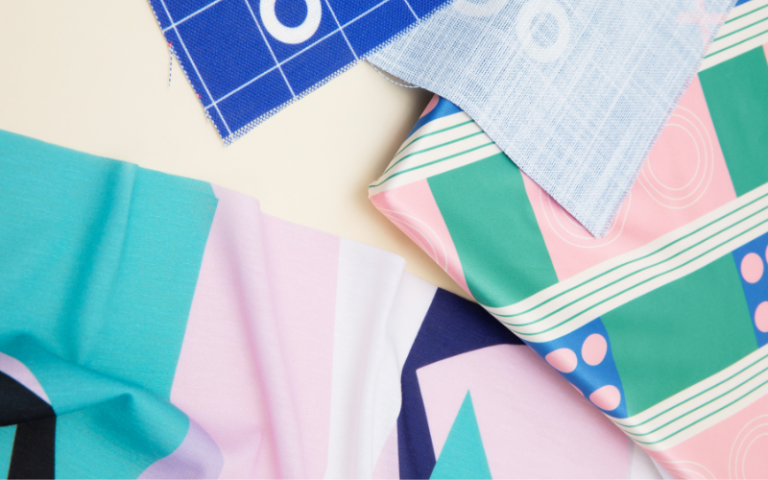In the world of fashion and interior design, trends may come and go, but some fabrics stand the test of time. Linen, with its timeless elegance, is one such fabric that has been cherished for centuries.
The History of Linen
Linen, with its timeless elegance and centuries of history, is adored for its durability and breathability. The cloth was revered by the ancient Egyptians as a sign of opulence and purity. Flax plants are first farmed, then harvested and retted to remove the stalks to make linen. Following that, the fibres are spun into thread or yarn and sewn into the fabric – a process that requires expertise and artistry!
Linen gained popularity in mediaeval Europe due to its wrinkle resistance, making it a favour of the affluent. Linen was popular for apparel and household goods such as bed linens, tablecloths, and upholstery. Even during times of economic adversity, everyone had access to linen.
The Advantages of Choosing Linen Fabric
Durability and Longevity
Linen fabric is well-known for its exceptional resilience and endurance. It is strong enough to withstand repeated usage without sacrificing quality or appearance. Its natural fibres absorb moisture while remaining breathable, keeping smells and germs at away. This extends its life and provides optimal comfort.
Furthermore, linen has a high tensile strength, which means it can withstand strain without breaking or fraying. It will retain its shape even after regular wear and tear, whether used for upholstery, curtains, or apparel. Furthermore, unlike many other textiles that produce unattractive lint balls with wear, linen resists pilling. Even after washing and using it, it retains its texture and attractiveness.
Versatility in Design
Linen fabric is an excellent choice for a diverse design. It provides limitless opportunities for fashion, home goods, and accessories. Its natural texture gives a unique visual charm!
The fabric is ideal for capturing any aesthetic, from simple to elaborate. Its natural drapes creates a lovely movement, making it suitable for evening gowns or summer wear. Because linen comes in a wide spectrum of hues, you may experiment with different tints and designs. It may be coloured in bold and vivid tones or subtle pastels without sacrificing quality. To add a flashy touch, add embroidery, beads, and sequins.
Exploring Different Small Print Designs
Exploring various small print patterns allows us to appreciate the timeless elegance they provide. The beauty of such materials is that they transcend trends and endure. There is a vast spectrum to explore, from exquisite flowers to geometric designs. Each print has its own distinct attraction, with its intricacies conveying a tale.
Floral designs, like English gardens in bloom, convey femininity and grace. Vibrant colours create a romantic atmosphere, elevating any outfit or interior design. Geometric designs, with their clean lines and exact forms, add a modern edge to clothes or living spaces.
Small patterns in neutral tones create understated elegance for those who prefer a more subdued approach. These designs contain detailed patterns on muted backgrounds, making them suitable for any palette or environment. These designs provide sophistication without taking the stage on pillows or garments.
Tips for Incorporating Small Print Fabrics in Upholstery
A touch of refinement may be added to any interior design with linen small print fabrics. Accent chairs and cushions are ideal since the patterns provide visual interest without overpowering the environment. Florals, geometrics, and patterns may provide personality and depth.
These materials work well with existing décor and furnishings. Small prints serve to balance out the appearance of a room with prominent components. Combine with various textures and elements to create a layered look.
Colour choices are frequently gentle and subdued, resulting in a soothing ambience. Furthermore, they are compatible with a variety of design styles. Consider scale when employing tiny prints in upholstery. Make sure the design is proportional to the piece of furniture. This creates symmetry and keeps the cloth from appearing overly cluttered.
Small print textiles may provide a distinct touch of elegance to any room’s decor. Intricate patterns and delicate accents can help to create an eye-catching focal point. They may also add depth and dimension to a space, making it more appealing.
Consider the room’s colour and theme when choosing tiny patterns for curtains and drapes. Choose designs that complement the current décor or go big with clashing prints. Choose high-quality linen textiles that are both sturdy and long-lasting. Linen provides natural insulation as well as a lovely feel. It’s also adaptable, with pleated versions for a traditional appearance and floor-length curtains for a modern vibe.
Conclusion
Linen is both ageless and adaptable. Small pattern textiles lend a feminine touch to any room or dress. Linen combines well with a variety of styles and situations. Because of its resilience, it is an excellent choice for long-lasting décor or wardrobe components. Linen is very airy and moisture-wicking.
Small print textiles provide dimension to a space or combination as well. Floral or geometric designs may simply improve the appearance. Small pattern textiles make apparel more trendy and eye-catching.

